
They have lived in isolation from the rest of the horse world for a hundreds of years, possibly a thousand years, separated by a barrier of marshes, lagoons and sandy beaches. While there has been some selective breeding, they are mostly a primitive breed, heavily bodied, with large heads. They are the Camargue horses, bands of semi-feral horses that roam in the Camargue, in the south of France. Some call them “The Horses of the Sea,” as they live on the beaches and waters of the marshes.
They are tied to the heritage of the area. The gardians, equivalent to a cowboy in America, watch over them. The horses are their mounts, and they’ve kept the traditions of their care for hundreds of years, still using the same tack and clothing to ride. The Camargue horses are allowed to run free, but the gardians watch them.
The Camargue horses draw visitors over the world to see their beauty. You’ve likely seen photos of them, bands of white horses running through the surf. But how did they get there, this breed that is so untouched by the outside world that they are basically completely identical?? And how can you see them in person?
Ancient Roots
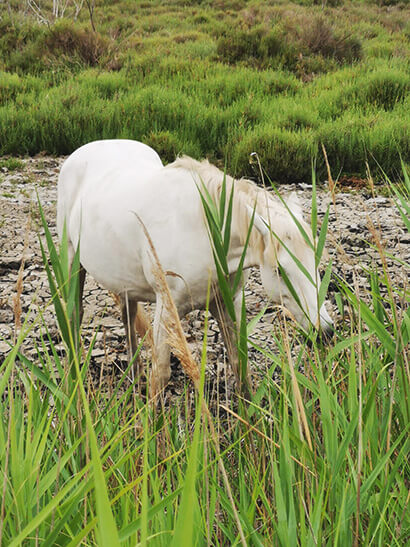
The Camargue horse’s origins remain shrouded in mystery, but there are some theories. Some believe that the horses are descended from the Solutré horses, a group of prehistoric equines whose remains were found in a different area of France. Those horses had large heads, similar to the Camargue horses.
Another theory is that they are of Iberian horse descent, brought by Celtic and Roman invaders. They were found to have similar genealogy.
Although it’s hard to say exactly how they go there, efforts have been made to preserve the standards of the breed with the establishment of a breed registry in 1964. There are two books, one for horses born out on the marshes (called hors manade), and one for horses born in captivity (called hors berceau). Foals are branded at weaning for identification purposes.
The Breed
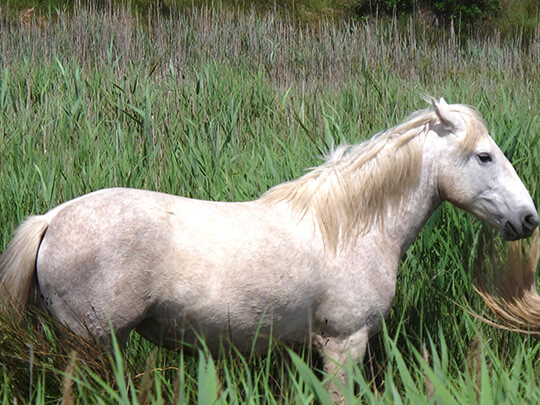
The most distinctive feature of the Camargue horses is their white coat, although they are born dark colors, and lighten as they age. They aren’t very big, and would be considered at large ponies, standing at around 14 to 15 hands tall.
Although some selective breeding has been done, the horses are mostly left to figure that part out themselves. The horses have evolved to become well suited for the marshes, able to tolerate the heat and insects. They have also developed amazing hooves. Living in such a wet place would destroy the hooves of another horse, but the Camargue horses have developed hooves that resist far more water than a usual horse. They rarely have hoof issues or need shoes.
The horses are known to have a calm temperament, and the Camargue Association even recommends them for children (assuming they mean a non-feral one, unless children are just really tough in France.). They are agile, intelligent, and have great stamina.
The horses are divided into herds, called manades. The traditional use of the horse is to control the herds of bulls that also live on the marshes. Although the horses are “wild,” they are used to humans, and many of them are handled by their gardians. They are the mounts of the gardians, and start training with them at 2 years old by ponying the horse with them while they work. They are also used for competition, primarily the Camargue equitation, but they have also been used for dressage, show jumping, and endurance.
They are also the popular mount for taking people out on the trails to see the wild Camargue horses. So, yes, you can ride a Camargue horse! See below for barns.
How to See the Camargue Horses
By Horseback
This is a popular tourist area, so there’s numerous ways to see the horses. By far the best way, obviously, is to take a horse and ride out on the marshes and beaches. Not only do you get to see the horses, but you’ll get to have a magical ride on the beaches.
Expect to see the wild horses, bulls, and flamingos out on your ride.
Stables to Ride Out From:
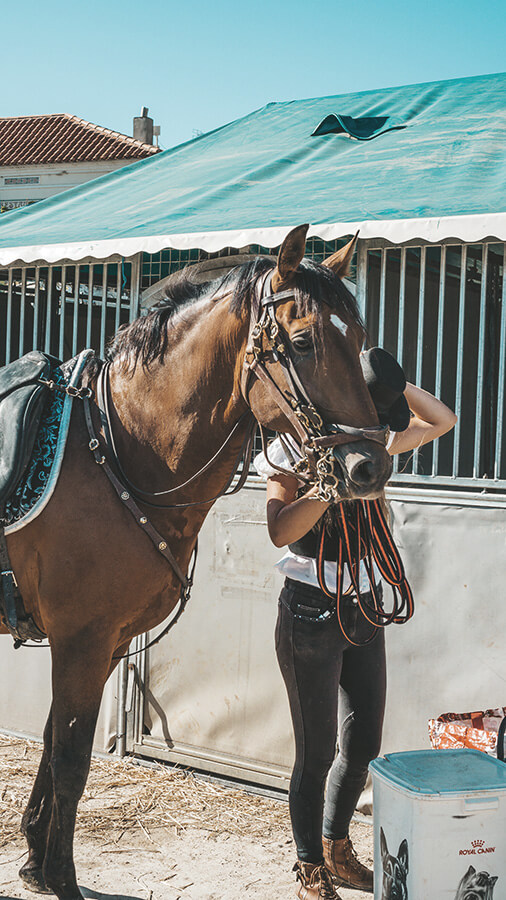
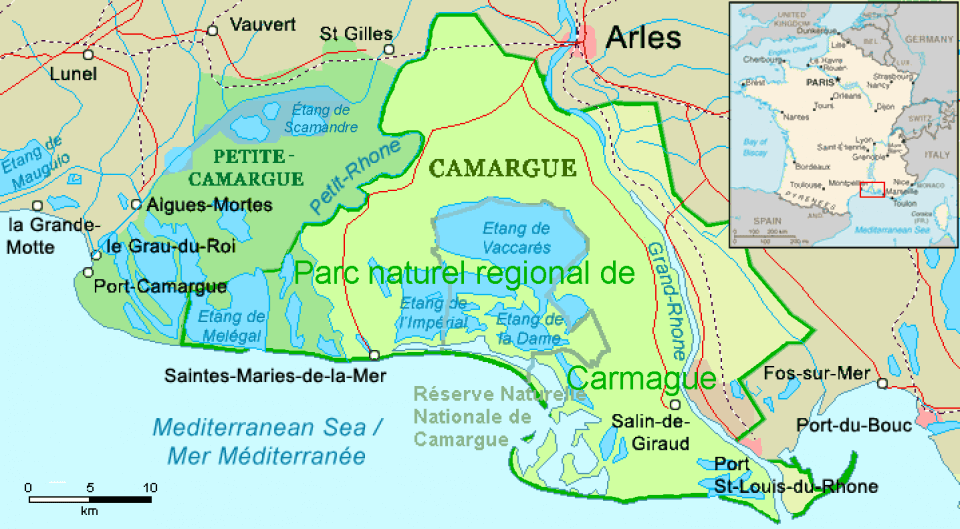
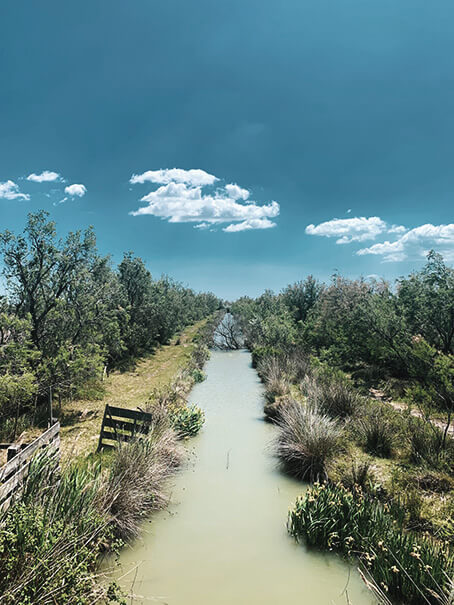
Other Ways to See the Camargue
If you’re with someone who doesn’t ride, and they won’t do it, despite all your pleading, you might have to look at some other options. You could try taking a open top safari ride out. Your group will get to see the bulls, the horses, and the flamingos that are in the area.
This tour is also by vehicle, and gives great information on the flora and the fauna in the area.
Fancy a bike ride? Frankly, I get worn out pretty fast at the bike at the gym, but luckily these bikes are electric. Get up close and personal with the animals on the beautiful trails.
In addition to the general tours, there are also photography tours. In these, you’ll get up close and personal, and the gardians will herd the horses around for you to get a great action shot.
Other things to see in the region are the beach, which is, well, a beach, where you do normal beach activities.
Noteworth Accommodation
The south of France is known to be a stunning place to visit. But when you’re done admiring stunning wild horses, laying on the beach, and possibly running from bulls (not a bull person, but that seems like something that would happen), go back to a memorable home away from home, too. Here are some really cool places that you should check out.
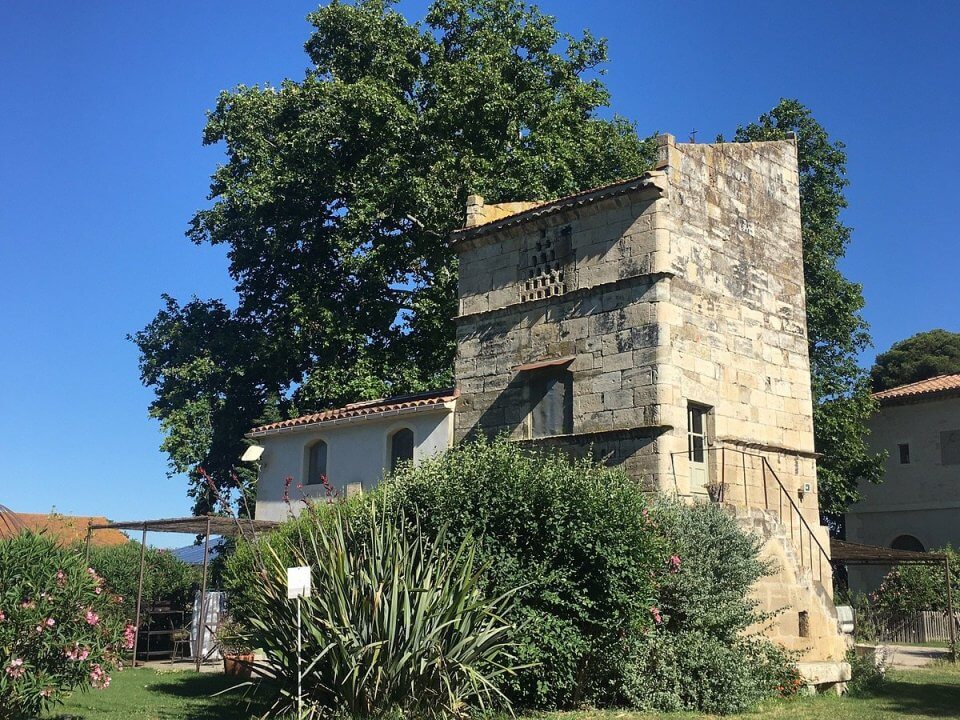
Mas Saint-Germain
This is a cottage rental AND ride out location. With an equestrian center on the property, you go right from your accommodation to riding in a few short steps.
It is written in French, but according to reviews, they will accommodate English speakers as well.
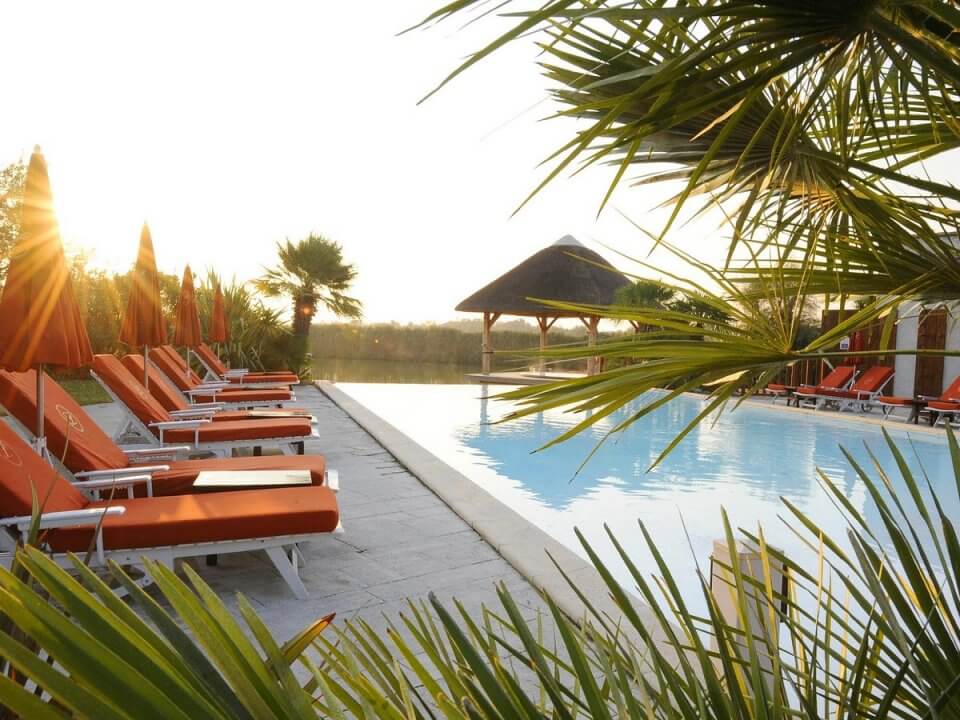
L’Estelle en Camargue
This accommodation describes itself as “a luxury hotel with the feel of a guest house.” The rooms blend right into the marshes, giving guests incredible views. There’s plenty of outdoor spaces to appreciate a panoramic view of the gorgeous area.
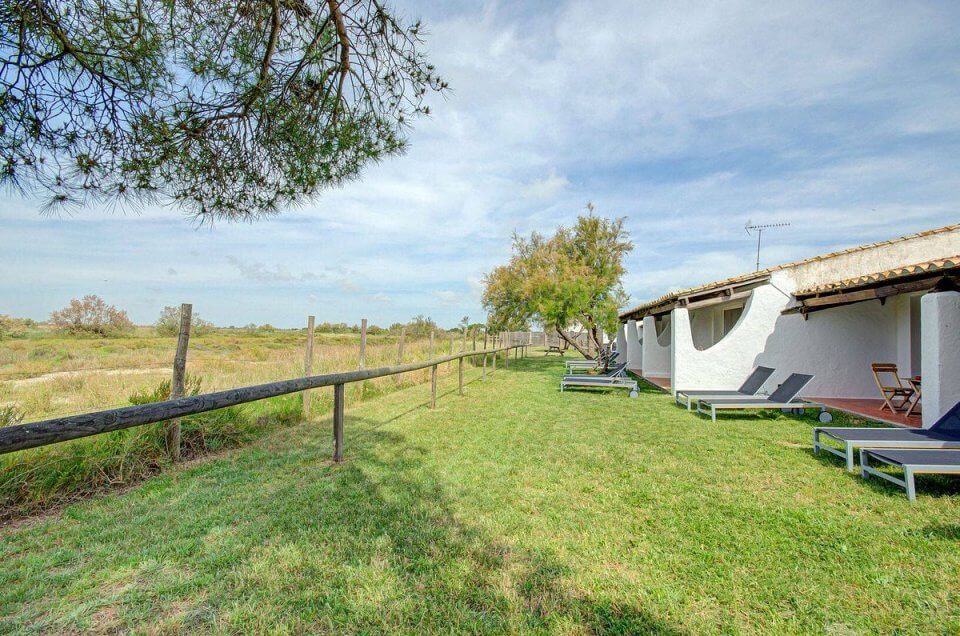
La Palunette
Located in the center of Camargue, just minutes from the medieval beachfront village of Saintes-Maries-de-la-Mer. A resort style pool and terraces to view the marshes make this the perfect base to relax.
A journey to see the Camargue horses, standing in the surf, with the setting sun behind them is not just a vacation for a horse lover, but a moment of clarity, of why we love these animals so much. It’s the raw beauty of nature, of the power and adaptability of these animals to thrive, even in hard conditions.
Seeing the the Camargue horses is a bucket list item that all equestrians should add to their list. You might just find yourself leaving not only with the memories of the sand and sky, but with a piece of the Camargue’s wild spirit forever woven into your soul.
